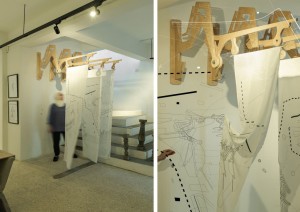
INTRODUCTION
The Architectural installation titled The Veil: Collecting Fragments of Layers through Her Gaze, was built in conjunction with Bakat Muda Sezaman 2021, an art exhibition at Balai Seni Negara, that provides a platform for young contemporary artists to exhibit their artwork on site. The site selected for this artwork was the lush green space of Bungadewa Tamansari, a community-based gallery, located in Petaling Jaya, Selangor.
Fragments of Layers
“In short everyday life is ‘real life’, the ‘here and now’, not abstract truth.” — Gender Space Architecture, 2000
I’ve been fascinated with the notion of everyday life since working on my Master thesis titled Women’s Haven (2014), a project that looks into the inclusivity of women’s needs in an architectural context. The idea started to evolve slowly. The process of thinking was inspired by my personal experience and voice as one of the city’s working women. Gender roles started to inform the way women should behave in a space and usually we have to conform to it while going through our everyday routine.
To put it into context, if the everyday scenarios encountered in any female prayer space were to be studied, a simple observation would inform how women use the space differently. The type of events that are usually seen in any female prayer space are for example women using the space as a safe haven, comfortably removing their scarf/layers of clothing to cool down from the outdoor heat. Sometimes a group of children can be seen running around while waiting for their mother, turning the space into a mini playground.
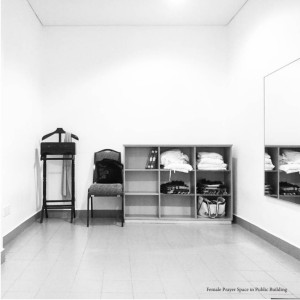
It seems that the female prayer space functions as more than just a prayer space, but rather a collective resting space for women. These invisible ‘layers’ of movements, scenarios and emotions seem to be forgotten and rarely discussed; that in the end, all these layers tend to happen in such a tiny, cramped, empty space.
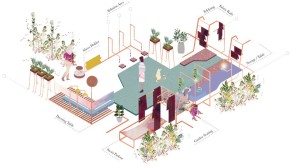
Back in the day, women saw domestic responsibilities such as taking care of the family as a way to show affection. As time went on, it has slowly merged into a definite gender role expected from women. With the current lifestyle and exposure to resources, women today venture into career growth and personal interest whilst at the same time strive for a healthy balanced lifestyle. Expectations of these layers of roles of mothers, daughters, sisters and caregivers seem to have been normalized and often goes unappreciated.
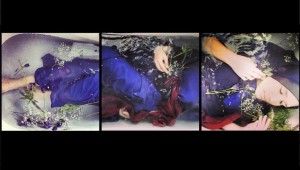
A series of mask/layers seems to be essential for women today. Apart from gender roles, layers of clothing have always been an interesting topic of conversation in society, it would seem that in order for society to feel comfortable women are also expected to wear appropriate attire. Without understanding the context where women choose what they wear based on faith, individuality or plain basic comfort, it is easier to judge rather than to imagine being in her shoes.
The Female Gaze

It seems that there are many unspoken layers of women today. I wondered what would happen if we start unveiling these layers and discovering their stories? What makes a woman need these layers on herself for society to feel comfortable? Why are these layers expected as part of her everyday moments?
The installation is meant to highlight and spark a conversation about these delicate layers for women today. The term ‘her gaze’ is used in this installation not just to highlight the gendered inclusive view in everyday life but to also put a note on the idea of feminity in architectural language that could somehow be more relatable.
CONSTRUCTING THE VEIL
From sketches to being constructed digitally with Rhino3D software, the architectural language used naturally tries to capture the organic flow/journey of women’s everyday routine. A series of organic modular structures were arranged repeatedly, creating a corridor of hanging fabrics.
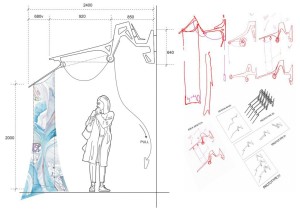
Technically, repetitive modular designs were used for easy on site installation—using minimum intervention yet creating the desired dramatic effect. Each modular piece of the 18mm thick plywood fabricated through a CNC router, was slotted into a wall hanging piece, holding a 2-metre long printed fabric.
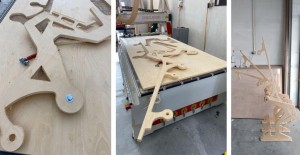
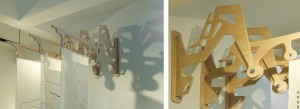
The printed fabric pattern resonates with the idea of ‘layers’ that are open to viewers interpretation through the layers of lines, depth, stories or memories. One might relate to the artwork through personal experience, or simply acknowledge the organic concept. An additional kinetic element was introduced to the installation by using movement to create an interactive flow to the artwork. Invisible strings were connected through the fabrics and steel washer that will create the flow of the fabric when any force is applied.
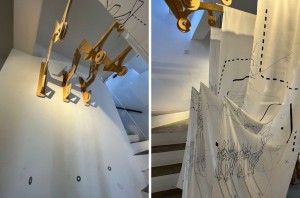
WRAPPING UP THE VEIL
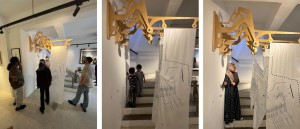
The installation was open to the public and received a variety of feedback. There was also interaction from all age groups. Children were seen running through the fabric creating an imaginative landscape and the idea of women resonates through the layers based on personal narratives. Stories were exchanged between one another, acknowledging each other’s struggles and journey which slowly unveils the narratives intended through the artwork.
“Today, feminism has gone beyond its original meaning of fighting for women’s right and legal reforms in education, property rights and suffrage. Its definition has extended to include an awareness and analysis of women’s discrimination and exploitation in the family, at work and in society.” — Feminism and the Women’s Movement in Malaysia, 2006

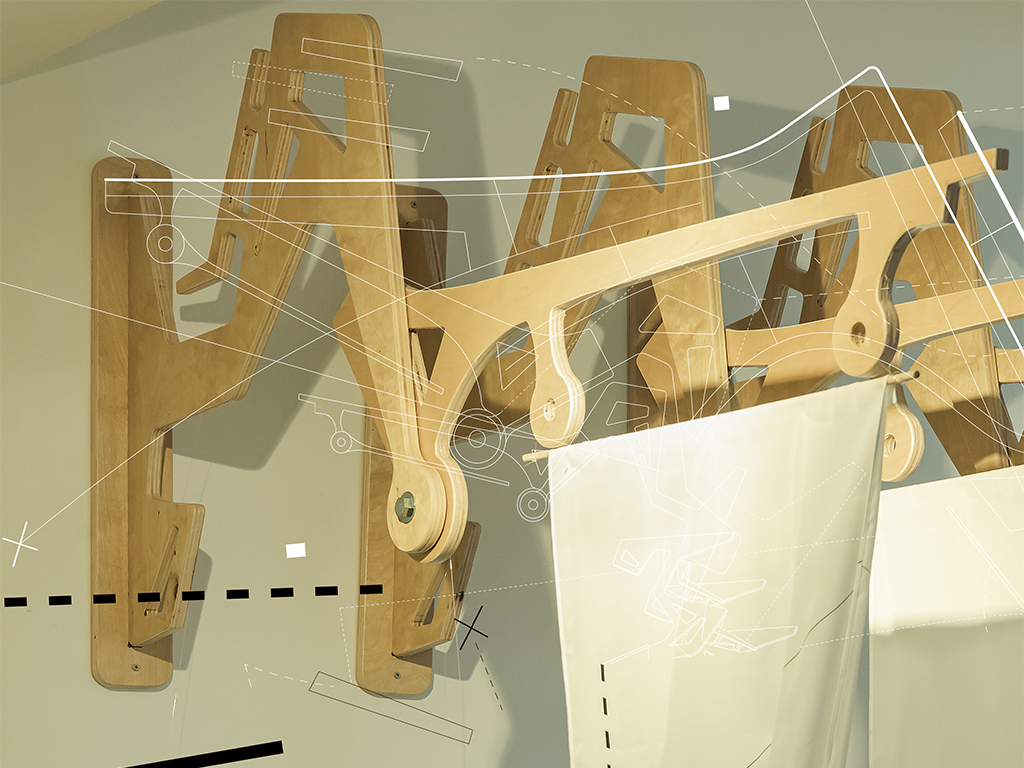
Aishah congrats on your work ! such a great unravelling of thoughts on women! well done